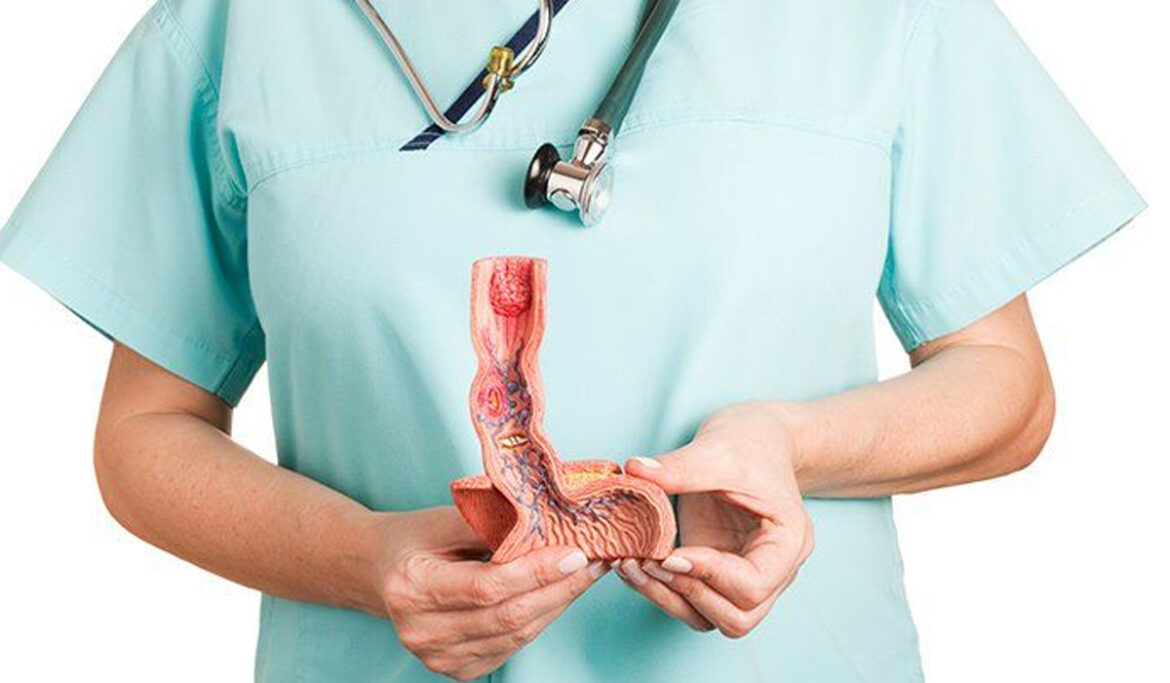What is Esophagus?
The tube that attaches the throat to the stomach is known as the esophagus. This 10-inch long muscular tube is a part of the digestive tract from where the food travels from the esophagus to the stomach.
The esophagus is comprised of four layers that include –
- Outer Layer: The esophagus is covered by this outer layer.
- Inner Layer or Lining: This layer helps in passing the food to the stomach as this layer is properly moist.
- Muscle Layer: This layer helps in pushing down the food to the stomach.
- Submucosa: Mucus is made by the glands present in this layer. This mucus moisturizes the esophagus.
What is Esophageal Cancer?
The uncontrollable growth of cancer cells in the esophagus causes esophageal cancer. This cancer begins at the inner layer of the esophagus that can spread further to the other layers of the esophagus and also to different body parts. Esophageal cancer has been categorized into two types that include –
Adenocarcinoma: This type of esophageal cancer starts in the glandular tissue in the lower part of the esophagus. The stomach and the esophagus appear together in this lower part of esophagus.
Squamous Cell Carcinoma: Squamous cell carcinoma begins in the squamous cells lining the esophagus. This type of esophageal cancer typically occurs in the middle and upper part of the esophagus.
Causes of Esophageal Cancer
There are known causes of esophageal cancer that happens when the cells in esophagus develop errors in their DNA. These cells grow and divide abnormally due to these errors. These abnormal cells eventually form a tumor in the esophagus that spreads to surrounding structures including different body parts.
Symptoms of Esophageal Cancer
- Hoarseness or coughing
- Difficulty in swallowing
- Fatigue
- Heartburn or indigestion
- Unexplained weight loss
- Frequent choking while eating
- Chest burning, pain or pressure
Stages of Esophageal Cancer
Stage 0: In this stage, the abnormal or unusual cells can only be seen in the layer of cells lining the esophagus.
Stage 1: The first stage is marked by the presence of cancer cells in the layer of cells lining the esophagus.
Stage 2: In the second stage, the cancer has reached to the outer wall of the esophagus or to the muscle layer of the esophagus. Also these cancer cells may have invaded 1-2 surrounding lymph nodes.
Stage 3: The third stage is marked by the spread of the cancer into the connective tissue wall or deep into the inner muscle layer. Also this cancer has spread to more lymph nodes close to esophagus and they may also spread beyond esophagus in the surrounding organ.
Stage 4: This is considered as the advanced stage of esophageal cancer. Now the cancer has spread to lymph nodes far away from the esophagus or to different organs.
Diagnosis of Esophageal Cancer
The medical history and symptoms of a patient are examined for diagnosing esophageal cancer. Some of these tests include –
- Biopsy: Tissue or cells are taken from the esophagus while performing a biopsy. The presence of cancer cells are checked by examining them under a microscope.
- Barium Swallow X-ray: A patient is required to swallow barium that helps in identifying certain problems that shows up on the x-ray.
- Endoscopy: A thin and light endoscope is passed down the throat into the esophagus in order to examine it. Sound waves are also used in this test that helps in providing more information on the extent of tumor and its involvement in surrounding tissues.
Further, the spread of cancer can also be determined by performing some other tests that include positron emission tomography (PET) scan, laparascopy, computed tomography (CT) scans and thoracoscopy.
Treatment of Esophageal Cancer
There are a number of treatment options available for esophageal cancer that depends on some factors such as general health of patient, stage of the cancer and the specific site of the primary tumor in the esophagus. Following are some of the treatment options –
Radiotherapy: High-energy radiation beams are targeted on the cancerous tissue in order to destroy it. Radiotherapy is usually used in addition with either chemotherapy or surgery. Radiotherapy can be categorized into two different types for treating esophageal cancer that include –
- Internal Radiotherapy: A small radioactive implant is placed close to the cancerous tumor for removing and destroying it.
- External Radiotherapy: This therapy makes use of machine that is placed outside the body. This machine helps in directing the radiation on the cancer for the purpose of destroying it.
Surgery: The surgical procedure for removing the entire or a part of the esophagus depends on the location and size of the tumor. There are a number of surgical procedures for reaching to the esophagus. The surgical procedure can remove nearby soft tissues, a section of the esophagus and the lymph nodes. The entire or a part of the stomach can also be removed. The cancer is removed by making several incisions in the abdomen and chest. In majority of cases, the stomach is pulled up and is then joined with the remaining portion of the esophagus. Also, a part of the intestine is used for connecting the stomach with the esophagus remaining part. A part of large intestine or small intestine may also be used. A part of the intestine is used when the stomach is removed for joining it with the left over part of the esophagus to the small intestine.
Chemotherapy: People with esophageal cancer can also be treated with the help of chemotherapy. This therapy makes use of certain drugs that helps in destroying the cancer cells. The injection of these drugs is done into a vein (intravenous) that then travels throughout the different parts of the body.
